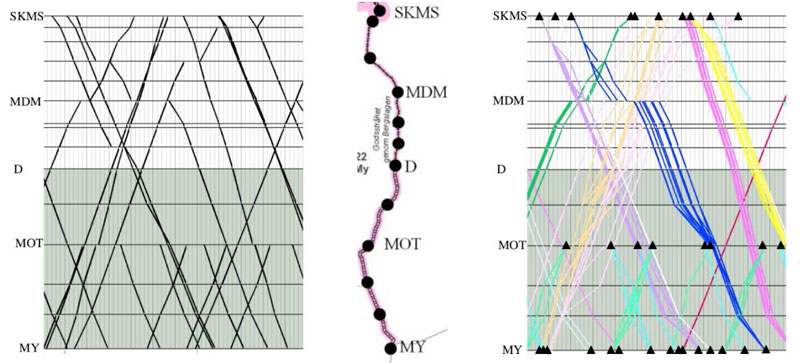by Sara Gestrelius
No two days are exactly the same on the Swedish railways. Despite this, most trains are granted only one train path that they are supposed to use every day of operation. Restricting each train to a single train path wastes infrastructure capacity and prevents train operators from getting the capacity they require. In a project funded by the Swedish Transport Administration, SICS Swedish ICT used optimization to plan for each operation day individually. The results show a major improvement in customer requirement fulfilment.
Train operators apply for track capacity in September each year, and it is the Transport Administration’s job to combine the trains in the applications into a yearly timetable. In order to make the timetable problem manageable for manual planning, only one train path is generally constructed for each train. All conflicts that this train faces with some regularity should be resolved in this one train path. However, the traffic pattern is different on different days, and to make this one train path conflict-free for all days the planner is forced to include extra time both for conflicts that occur, for example, solely on Mondays, and also for conflicts that occur solely on Wednesdays, even if including extra time only once would have been enough. This wastes capacity and results in the train path having unnecessary stops and time supplements on the day of operation.
SICS Swedish ICT has been doing research on train timetable problems and processes for several years, and one of the core ideas is that there are only certain points in the railway network where the exact timings of a train have to be fixed, namely points where there is some commercial activity. We call these points “delivery points” and the time promise a “delivery commitment”. In the current process the exact timings of the entire train path are included in the delivery commitment. By committing only to certain times rather than to entire train paths the Transport Administration retains the freedom to re-plan the operation to some extent, and may also use different operation plans (i.e. train paths) for different operation days. This new way of only committing to certain times is currently being implemented in Sweden. In Figure 1 the times included in the delivery commitment for the two different processes are marked in black.

Figure 1: The line between Skymossen (SKMS) and Mjölby (MY) that was used as a case study. The outcome of the current process is shown to the left, and the new proposed process to the right. The delivery commitment times are marked with black and include the entire train path for the current process and a subset of times (marked with triangles) for the proposed process.
In a project started in 2014 and due to end in 2016 we have been investigating how the delivery commitments generated in the yearly timetable process are affected by planning for each individual operation day rather than an example day with all traffic. Further, mathematical models that can be used in a planning support tool handling each day individually are being developed and tested. More precisely, the timetable problem was modelled as a Mixed Integer Program and rolling horizon planning was used to generate a yearlong timetable. As stated above, the delivery commitments generated have to be upheld every day of operation. This means that the when all individual days of a train have been planned for, the latest arrival time and the earliest departure time at delivery points can be put in the delivery commitment. Also, if a short run time is required the runtime from the worst-case day can be promised.
The method was tested on the line between Skymossen and Mjölby in Sweden [1]. The test case includes both single and double track sections and a mixture of passenger and freight trains. Further, it is assumed that some train operators value getting the exact times they’ve applied for (true for most passenger trains), while others have indicated that a short running time is more important (true for some freight operators). The application times were sampled to be close to the times in the finalized 2014 timetable.
The results show that the average running time was improved for 20 of the 67 trains where a short running time was preferred, and the worst running time was improved for eight trains. When it comes to timeliness the number of application times that could be granted exactly as applied increased from 193 to 260 out of a total of 296. That is, the number of times the customers could get the arrival or departure times they had applied for increased from 65% to 88%, indicating that there is great potential in planning for each individual day.
During the last year of the project, the aim is to develop a method for handling larger geographical areas, and also testing various objective functions and possibly iterative solution methods to improve the delivery commitment generation even more. For example, it would be interesting to explore methods that inhibit the possibility of one or a few operation days getting exceptionally bad train paths and thereby resulting in the train getting poor delivery commitments.
Link: https://www.sics.se/projects/framtidens-leveranstagplaneprocess
Reference:
[1] S. Gestrelius, M. Bohlin, and M. Aronsson: “On the uniqueness of operation days and delivery commitment generation for train timetables”, IAROR ICROR RailTokyo2015, 2015.
Please contact:
Sara Gestrelius, Martin Aronsson, Markus Bohlin, SICS Swedish ICT











